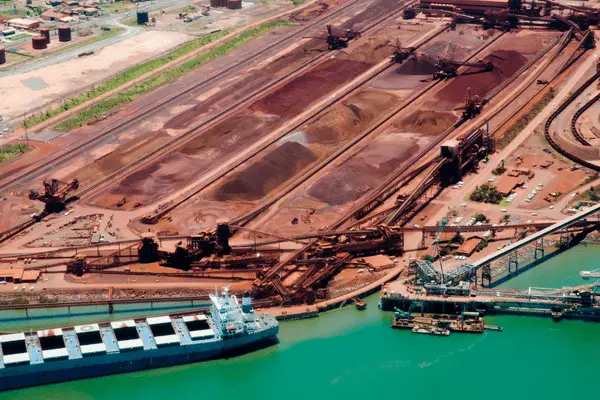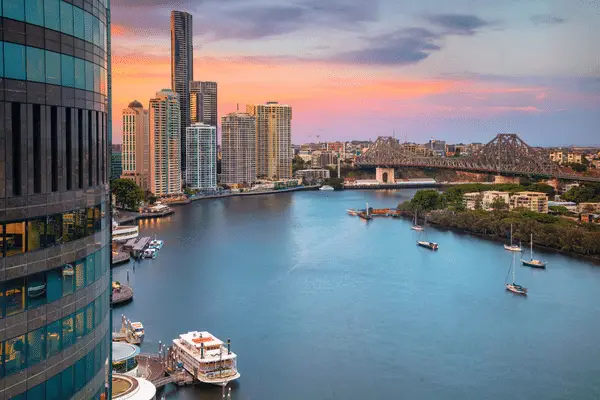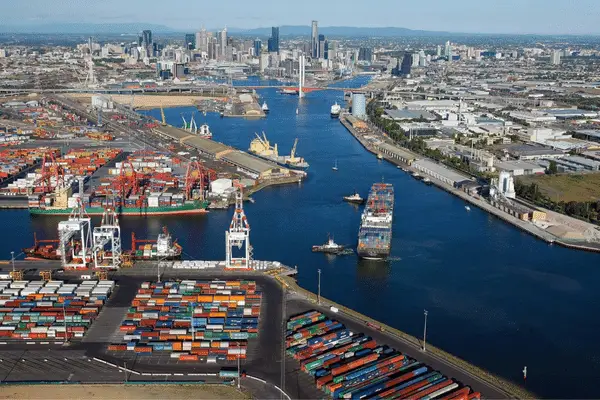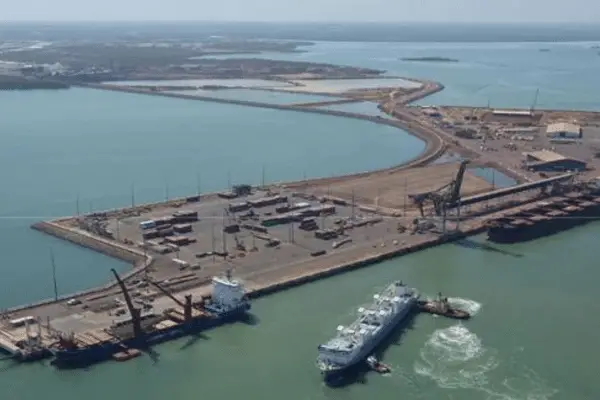The wealthy economy of any country will rely upon most of its priority in the shipping sector. Australia has an affluent economy filled with rich natural resources and agricultural goods. The shipping industry of Australia takes care of its adequate transportation to countries such as China, Japan, the US, South Korea, and New Zealand.
Some people may not know, but Australia is the biggest export of wine. The geological position of the country places them as an essential piece in the shipping puzzle.
Australia has access to multiple ports and harbors and conducts most foreign trade through internal maritime routes. This article will cover 5 of the biggest ports in Australia with in-depth information on them.
Page Contents
List of The Biggest port in Australia
A lot of ports deal with the shipping sector in Australia, and the biggest ones deal with the enormous tonnage of goods and services. This section will cover five of the largest ports in Australia.
#1 Port of Hedland

- Established in – 1896, October 22
- Managed by – Pilbara Ports Authority (A state government instrumentality)
- Population – over 4000
Port of Hedland is the largest bulk export facility in the world, but most of its shipment deals with Iron Ore. While iron ore takes most of the action, it also handles other commodities. Commodities include ammonium, fuel oils, lithium, cargo, cement, Roro, Cargo, salt, sulphuric acid, copper, livestock, and chromite.
Highlights Port of Hedland
- Primarily focus on shipment of iron ore. The density is so huge that it has caused an environmental issue in the town of Hedland.
- Port of Hedland also owns the title of the busiest and largest shipping port in Australia and Oceania.
- The port of Hedland handles more than 450 million tonnes of cargo and over 1500 ships annually.
- Well-connected routes have made the port more welcoming to cargo traffic.
- Two extra wharves are expanding the port to help with iron ore and lithium exports.
#2 Port of Adelaide

- Established – 1836
- Size- 14 Kilometers
- Famous spot – 19th-century pubs, town halls, and hotels
The port of Adelaide serves as a prime shipping port for southern Australia and serves as a gateway for exporting vehicles, grains, presses, wines, and concentrates. Here are the highlights of the port of Adelaide.
Highlights of the port of Adelaide
- It handles over 110 million cargoes and 1000 ships each year.
- The port of Adelaide holds over 21 piers.
- The dock has direct maritime connections with all the major Asian and middle eastern ports.
- The inner harbor covers processed meat, fruits, wool, soda, ash, cement, grease, metals, and goods.
- The port also features modern port equipment and cold storage facilities with six silos.
- The port also features grain elevators and enormous cranes for importing petrol, fertilizers, timber, and paper.
- The outer port deals with general cargo and livestock.
#3 Port of Brisbane

- Area – 24.6 km
- Location – 22 Km
- Residence – None
- Government – City of Brisbane/ Wynnum Manly Ward
Port of Brisbane is the third biggest container facility located in Australia. The area is known for agriculturally diverse areas, shipping various canned food, sand, and sugar. Here are some of the highlights of the Port of Brisbane.
The highlight of Port of Brisbane
- The port is dominated by plants, oil refineries, sawmills, shipyards, rubber factories, etc. It also deals with crude oil, gypsum, chemicals, wood, construction material, and transport equipment.
- It carries over 31,878,000 tonnes of cargo and over 800,000 TEU and handles over 2000 ships annually.
- The port has a liquid bulk terminal with four berths that deal with crude oil and an oil refining plant.
- Port has supplied a coal berth, grain dock, clinker plant, and extra berth for wood chips.
#4 Port of Melbourne

- Built – 1889
- Size – 143,000
- Platforms – 16
The Port of Melbourne counts as the busiest port facility in entire Australia. It handles a majority of container traffic in the country. The popularity of the hub lies in its financial, business, and manufacturing climate surrounding the area. Here is the list of highlights by the port of Melbourne.
Highlights of the Port of Melbourne
- It serves as a critical tourism place in Australia.
- It holds over 3000 vessels, carries over 70 million tonnages of cargo, 2 million TEU, and, lastly, 70k passengers.
- The port has 34 cargo facilities.
- Port of Melbourne has a significant trade hub linking to the southeastern region of Australia, Tasmania, Victoria, and New South Wales.
- All the docks can hold ships with LOA of 290m with a draught of 12m.
#5 Port of Darwin

- Operated by – Darwin port operations
- Available berths – 5
- DWT limit – 80,000 tonnes
It got its name after the Naturalist Charles Darwin, author of the origin of species. The port now serves as a primary port for Northern Australia. The sport fishing harbor and mooring basin provide ship repair and maintenance. Here are the highlights of the port of Darwin.
Highlight of the port of Darwin
- The local economy depends on the Port of Darwin to support its rural and mining sectors.
- Local industries include tiles, brick, uranium, fruits, pearls, zinc and lead concentrates, LNG, container goods, livestock, and fodder.
- It holds over 1500 ships, carries over 3 million tonnes of cargo, and has 9000 TEU.
- The giant ship the port ever had was over 81,000 DWT.
- The major export of the port is cattle and crucial regional oil and natural gas hubs.
- The 80 berths all have showers, washrooms, and workshops.
Conclusions
Wealthy countries rely on their shipping industry to maintain their economy daily. Countries such as Australia rely on their materials and agriculture industry to sustain their economy. The maritime routes take care of the foreign trade in the country. Major countries such as Japan, China, the US, South Korea, and New Zealand depend on the shipping industry of Australia.
